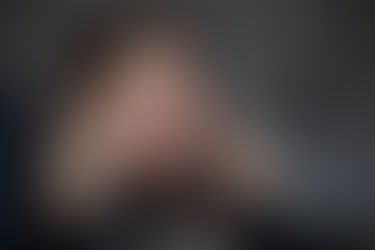The dentist can save your life
- gahwaleedmd
- May 29, 2017
- 4 min read

A routine visit to the dentist saved Joana Breckner’s life.
While in the chair 17 years ago, her dentist Phillip Sacks DDS ’70 discovered abnormal white spots on Breckner’s tongue.
“They were so small, I couldn’t even see them,” said Breckner, a nonsmoker who rarely drank.
Though a biopsy came back benign, Sacks and other specialists continued to monitor Breckner over the next several years.
“I was very vigilant about my health,” she said.
In 2007, Breckner felt something unusual inside her mouth.
“My doctor took one look and said that I didn’t even need a biopsy. It was cancer and had to be removed,” she recalled.
Over the next six years, she underwent several procedures and treatments as her cancer went in and out of remission — including a surgery to remove part of her jaw and half of her tongue, followed by months of intense radiation and chemotherapy.
I survived because every doctor put all their energy into me, and I feel a responsibility to repay the favor.
Joana Breckner
“This is a brutal, brutal disease, and we need to share these stories to create awareness,” Breckner said. “If I can spare one person from having to go through what I went through, I will. I survived because every doctor put all their energy into me, and I feel a responsibility to repay the favor.”
Early diagnosis saves lives
Nearly 50,000 Americans will be diagnosed with oral cancer this year; only about half will be alive five years after diagnosis, according to the Oral Cancer Foundation.
If found in the early stages, oral cancer patients have an 80 to 90 percent survival rate, but the majority of patients are diagnosed in later stages of the disease, often after the cancer has spread, according to the foundation.
While older adults who drink and smoke are more prone to oral cancer, the disease often strikes those outside risk groups, like Breckner.
For example, HPV — the virus that causes cervical cancer — has triggered an uptick in oral cancer among young nonsmokers, making it more difficult to define those who could be high-risk.
“That’s why it’s so important for everyone to have good oral cancer screenings,” Sacks said. “Patients go to the dentist more than they go to a physician, so dentists are on the front line of finding oral cancer. If you find it early, you can save a life.”
Sacks said he’s found about 15 cases of oral cancer during his almost 50-year career, “which is more than my [peers] tell me they have found,” he said. “My father was a pathologist, and I’ve always had a keen interest in that field. I think I look a little harder and refer more [patients] for biopsies.”
Sacks also credits his extensive training on the disease while he was a USC student the late 1960s.
“We had fine oral pathologists telling us what to look for,” he said. “We went to a hospital to meet with MDs, oral surgeons and even cancer patients — that was a dose of reality.”
Oral cancer screenings
Oral cancer training remains a cornerstone of USC’s curriculum, with screenings often taught during students’ first trimester.
“All of our students — whether they’re in the dental hygiene program, studying to become dentists or dentists studying for a specialty — everyone learns how to do an oral cancer screening,” said Mahvash Navazesh, executive associate dean for academic, faculty and student affairs. “They must demonstrate competency in this area before they have the privilege of touching a patient.”
More than mastering a skill, Navazesh wants students to raise awareness about the disease, much like doctors encourage breast cancer screenings.
“We want our students to talk to patients about oral cancer,” she said. “The public can do a lot to monitor their oral health conditions. They can periodically take a handheld mirror and check for lumps, bumps or sore spots.”
Oral cancer can appear as a red, white or red-and white-speckled area, according to the Oral Cancer Foundation, which suggests patients go to their trusted dental professional if they have any lump that feels hard and fixed to the underlying tissues or an open sore in the mouth that doesn’t heal in 10 days.
Sacks has a sign in this office that reads, “Any lumps or bumps?” to encourage patients to ask questions. “I’ve had patients report lumps to me because of it,” he said.
Clean and screen
Now cancer-free for “four years, four months and three days,” Breckner has made it her mission to ensure each patient gets “cleaned and screened” for oral cancer every time they visit a dentist.
“This is something so simple: It takes a few minutes,” she said. “Your mouth is massaged inside and out. There’s no needles, no pain, nothing to be afraid of.”
Sacks echoes the importance of screenings.
“For a dentist, there’s no higher calling,” he said. “We improve patients’ smiles, self-esteem and general health, and that’s great. But saving a life is something you don’t get to do every day — there’s nothing more noble than that.”
Call us to schedule your life-saving screening today!
You can also visit us at the Fort Lee Health Fair in October for a FREE SCREENING.
Source: http://news.usc.edu/120030/a-five-minute-oral-cancer-screening-can-save-your-life/









Comments